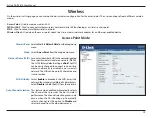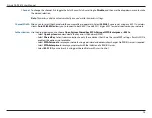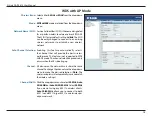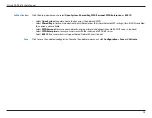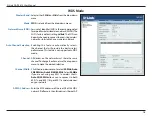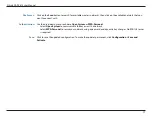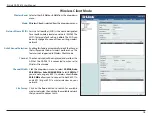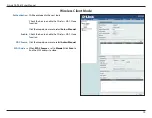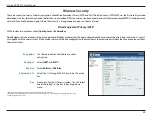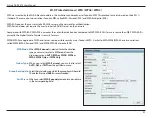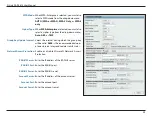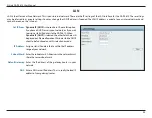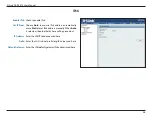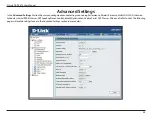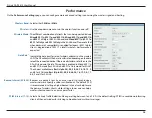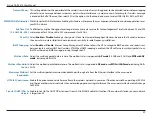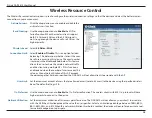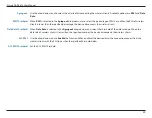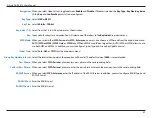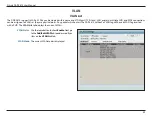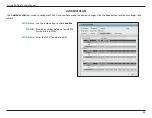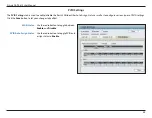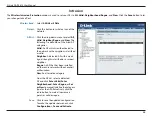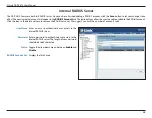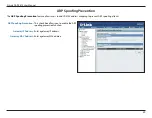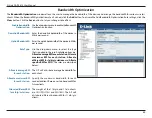
D-Link DAP-2610 User Manual
26
Performance
On the
Performance Settings
page, you can configure more advanced settings concerning the wireless signal and hosting.
Wireless Band:
Wireless:
Wireless Mode:
Data Rate*:
Beacon Interval (40-500):
DTIM Interval (1-15):
Select either
2.4GHz
or
5GHz
.
Use the drop-down menu to turn the wireless function on or off.
The different combination of clients that can be supported include
Mixed 802.11n, 802.11g and 802.11b, Mixed 802.11g and 802.11b
and
802.11n Only
in the 2.4 GHz band, and
Mixed 802.11n, 802.11a,
802.11a Only
, and
802.11n Only
in the 5 GHz band. Please note that
when backwards compatibility is enabled for legacy (802.11a/g/b)
clients, degradation of 802.11n (draft) wireless performance is
expected.
Indicate the base transfer rate of wireless adapters on the wireless
LAN. The AP will adjust the base transfer rate depending on the base
rate of the connected device. If there are obstacles or interference, the
AP will step down the rate. This option is enabled in Mixed 802.11g
and 802.11b mode (for 2.4 GHz) and 802.11a Only mode (for 5 GHz).
The choices available are
Best (Up to 54), 54, 48, 36, 24, 18, 12, 9,
and
6
for 5 GHz and
Best (Up to 54), 54, 48, 36, 24, 18, 12, 9, 6, 11,
5.5, 2
and
1
for 2.4 GHz.
Beacons are packets sent by an access point to synchronize a
wireless network. Specify a value in milliseconds. The default (100)
is recommended. Setting a higher beacon interval can help to save
the power of wireless clients, while setting a lower one can help a
wireless client connect to an access point faster.
Select a Delivery Traffic Indication Message setting between 1 and 15.
1
is the default setting. DTIM is a countdown informing
clients of the next window for listening to broadcast and multicast messages.

